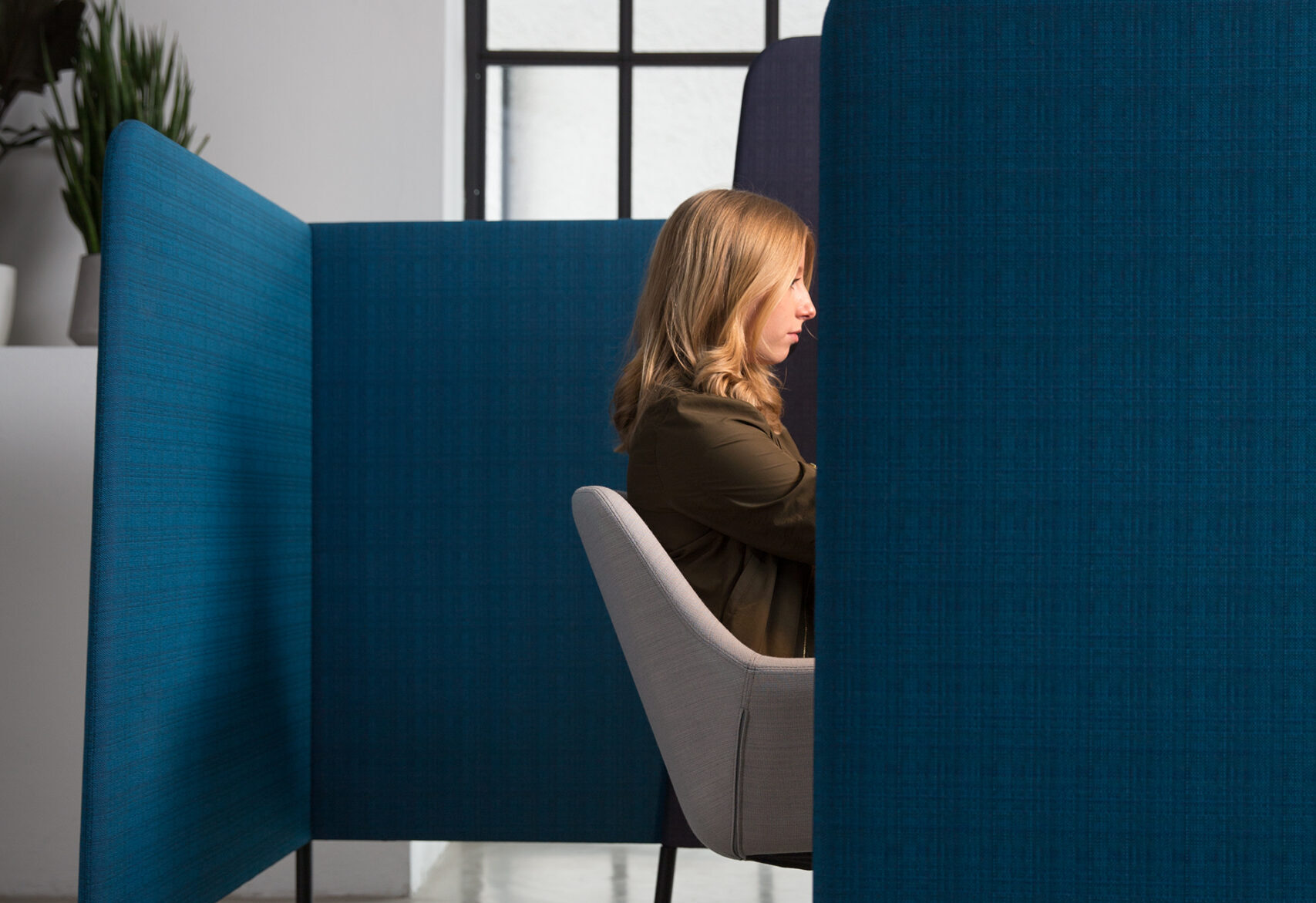Flexible. Agile. Smart. Lighting management in the office.
By Helena Pumberger, 22.08.2023

Too bright, too dark, glare. Finding the optimal lighting for productive work and supporting agile workplaces requires know-how and planning.
In the right light.
If a workplace is badly lit it can lead to fatigue and headaches. On the other hand, too much light or direct sunlight will cause glare and concentration difficulties, especially when working at the screen. In principle, the statement holds true: if it’s bright enough, daylight should be the rule. But since this isn’t always possible, artificial light sources must be deployed.
Experts recommend an intensity of around 300 to 500 lux for direct lighting of the workplace. The best-case basic lighting for a room is gauged at 100 lux. To avoid negative effects, potential reflectors should be covered and luminaires positioned in such a way that they do not shine directly on or dazzle employees’ eyes. A combination of ceiling lights and free-standing and task luminaires is beneficial. Placement of the desk parallel to the window avoids glare and reflections. According to the experts, the CRI value – the colour rendering index – of an object is a key factor when it is lit from a light source. If luminaires have a high CRI, they support natural colour perception in the room. This means that the colours have a natural and non-artificial effect.
A distinction is also made between indirect and direct lighting. Free-standing luminaires and wall spotlights radiate from the desk into the room without glare, while ceiling lights, for instance, directly illuminate the room from overhead.
Variable solutions for agile work.
Digitisation and modernisation of the world of work also require the lighting to be adapted to the increasingly agile work styles. Many rooms are modular and used for a diversity of tasks. Smart lighting is precisely adapted to this need for flexibility. Equipped with sensitive sensor technology, the luminaires are adjusted to their environment and radiate as much light as is required in whatever situation. You don’t need to switch on and off: as soon as the coworkers leave the room, the light automatically goes off. In addition, centrally controlled points actuate lighting management overall for all offices.
A particularly adaptable solution is needed in conference rooms. During a presentation, the media wall has to be kept dark enough to enable an optimal view of the visualised contents, yet sufficiently bright to avoid fatigue. Dimmable luminaires and separately switched solutions enable individual setting options. A flexible variant is also provided by easily transportable battery lamps. Burdensome cables are dispensed with, and, as desk lamps or free-standing luminaires, they are deployable any time precisely where they are needed.
Customised lighting design.
But where are we to install the lighting and what kind? Pendant lights, spotlights, which is better? Dimmable or manual control? The theme of lighting is a key component in office planning. For an optimal solution, the office planner and lighting management experts are recommended to work out a customised plan for the respective rooms and requirements.




